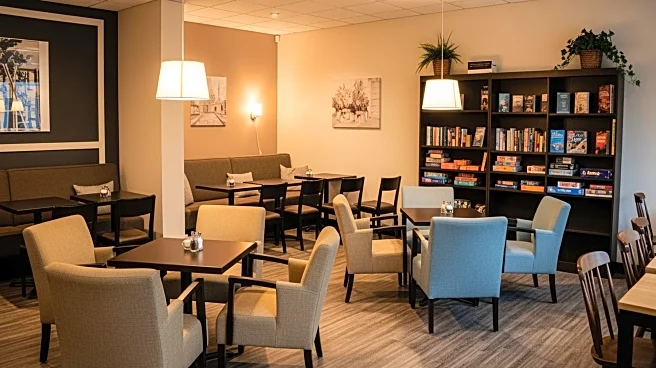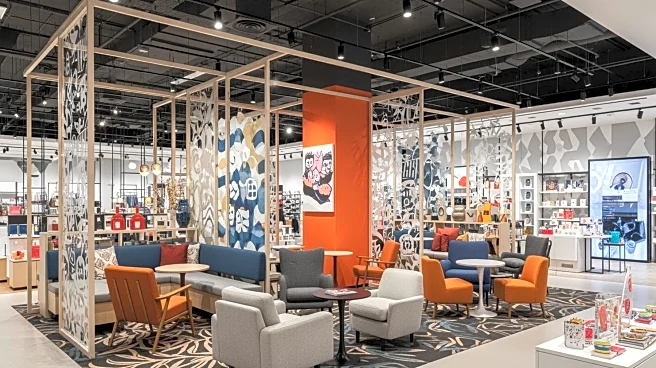What's Happening?
Retailers are increasingly redesigning their stores to function as 'third places,' aiming to create low-pressure environments where customers can linger between home and work. This concept, originally
proposed by sociologist Ray Oldenburg, emphasizes civic spaces like cafes and libraries rather than commercial venues. Brands are incorporating amenities such as seating areas, listening bars, and in-store cafes to encourage longer visits, enhance customer loyalty, and generate positive word-of-mouth. However, the effectiveness of these strategies in driving sales remains uncertain. Retail editor Cat Chen discusses the importance of scale and measuring success beyond sales, while cautioning against turning community-building efforts into mere branding exercises.
Why It's Important?
The shift towards creating 'third places' in retail settings reflects broader trends in consumer behavior and societal changes post-pandemic. As foot traffic in physical stores declines and social isolation increases, retailers are seeking innovative ways to attract and retain customers. By fostering a sense of community and offering practical amenities, stores can enhance customer experiences and potentially improve brand perception. However, the challenge lies in balancing authentic community engagement with commercial objectives. Successful implementations could lead to increased customer loyalty and brand affinity, while poorly executed attempts may be perceived as superficial marketing tactics.
What's Next?
Retailers will likely continue experimenting with the 'third place' concept, refining their approaches to better integrate community-building elements with commercial goals. As these initiatives evolve, businesses may explore partnerships with local organizations or community groups to enhance authenticity and relevance. Additionally, retailers will need to develop metrics to assess the impact of these strategies on customer engagement and sales. Stakeholders, including retail analysts and consumer advocacy groups, may monitor these developments to evaluate their effectiveness and influence on the retail landscape.
Beyond the Headlines
The transformation of retail spaces into 'third places' raises questions about the future of physical retail and its role in community life. As brands navigate this shift, they must consider ethical implications, such as the potential commodification of social spaces and the impact on local businesses. Long-term, this trend could influence urban planning and the design of public spaces, as retailers seek to integrate more seamlessly into community ecosystems.











